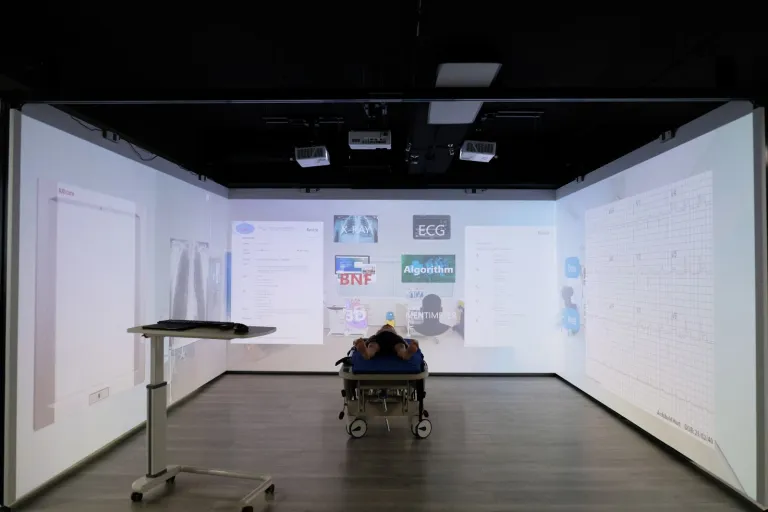Work is now under way on high-tech new teaching facilities set to put Swansea University at the forefront of healthcare education.
Believed to be the largest installation of immersive wall simulation suite technology of its kind in the UK, the centre will be at the heart of SUSiM, the University’s specialist programme launched to expand ground-breaking simulation and immersive education.
The former Haldane building at the Singleton campus is being transformed into a state-of-the-art centre featuring eight immersive wall simulation suites with a further three suites being developed simultaneously at the University’s St David’s Park campus based in Carmarthen.
Overseeing the SUSiM project is the Director of Simulation Education for the Faculty of Medicine, Health and Life Sciences- Associate Professor Jo Davies who stated students from across the university’s range of healthcare courses will be able to benefit from a wide variety of real-world scenarios and experiential learning opportunities.


Work has begun to transform the former Haldane building into the new SUSiM centre at Swansea University’s Singleton campus.
She said: “Building on Swansea University’s excellence in teaching and research, the vision for the SUSiM programmes and facilities is to provide the highest standards of simulation-based education, innovation, and research in this rapidly expanding field.
“The centres will allow our students to train together in one of the largest single installations of immersive wall simulation suites, supported by a trained simulation faculty focusing on patient, family, community quality and safety in healthcare education.
“The SUSiM programme will provide highly realistic educational opportunities for healthcare students, health board partners and stakeholders.”
She and her team are collaborating with Health Education and Improvement Wales (HEIW) Simulation Deans to contribute to the development of simulation resources as well as health boards and other Welsh academic centres and businesses.
The suites may not be ready to welcome students until September 2023, but the University already has a group of SUSiM champions – a team of interprofessional staff ready to support students and colleagues as they develop their skills using simulation-based learning and our existing simulation technology.
The immersive wall suites will build on the success of existing training resources such as simulated patients – manikin-based simulation ranging from low to high technology resources – as well as advancements in augmented, virtual, and assisted realities, supported by a highly skilled operations team led by Mark Hughes- Head of technical, infrastructure and environment for Swansea University.
The team’s work so far has been gaining widespread recognition in the UK and around the world. The SUSiM team have been asked to deliver a talk at the Association for Simulated Practice in Healthcare conference next month while A/Prof Jo Davies is also set to present at the International Society for Simulation In Healthcare IMSH conference in Florida next year.
It is hoped the high-profile engagement will bring the SUSiM project opportunities to collaborate with even more international simulation programmes, businesses and SBE experts.
Associate Professor, Jo Davies has extensive experience in setting up simulated learning facilities and programmes and is excited to be part of such a major development in healthcare education and research.
She added: “The vision of major advancements in simulation-based education and immersive learning has been highly supported by the Swansea University leadership team, with the aim to support the growing complexities of training safe and proficient healthcare teams.
“I am looking forward to continuing to work alongside the excellent multi-professional faculty, students and communities as the SUSiM facilities and programmes come to fruition.”



















